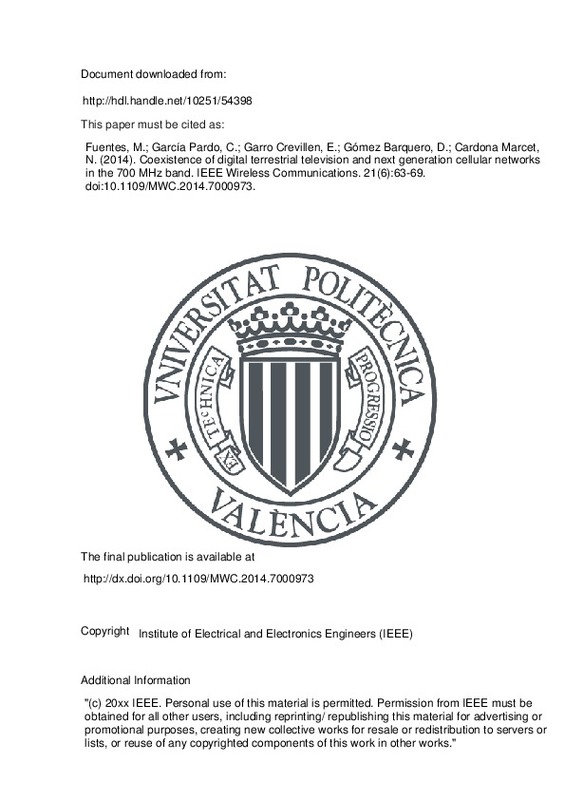JavaScript is disabled for your browser. Some features of this site may not work without it.
Buscar en RiuNet
Listar
Mi cuenta
Estadísticas
Ayuda RiuNet
Admin. UPV
Coexistence of digital terrestrial television and next generation cellular networks in the 700 MHz band
Mostrar el registro completo del ítem
Fuentes, M.; García Pardo, C.; Garro Crevillen, E.; Gómez Barquero, D.; Cardona Marcet, N. (2014). Coexistence of digital terrestrial television and next generation cellular networks in the 700 MHz band. IEEE Wireless Communications. 21(6):63-69. doi:10.1109/MWC.2014.7000973
Por favor, use este identificador para citar o enlazar este ítem: http://hdl.handle.net/10251/54398
Ficheros en el ítem
Metadatos del ítem
| Título: | Coexistence of digital terrestrial television and next generation cellular networks in the 700 MHz band | |
| Autor: | Fuentes, Manuel Garro Crevillén, Eduardo | |
| Entidad UPV: |
|
|
| Fecha difusión: |
|
|
| Resumen: |
With the spectrum liberation obtained by the deployment of digital terrestrial television and the analog TV switch-off, new bands are being assigned to IMT LTE. In the first cellular deployments in the digital dividend at ...[+]
|
|
| Palabras clave: |
|
|
| Derechos de uso: | Reserva de todos los derechos | |
| Fuente: |
|
|
| DOI: |
|
|
| Editorial: |
|
|
| Versión del editor: | http://dx.doi.org/10.1109/MWC.2014.7000973 | |
| Descripción: |
|
|
| Tipo: |
|







![[Cerrado]](/themes/UPV/images/candado.png)


